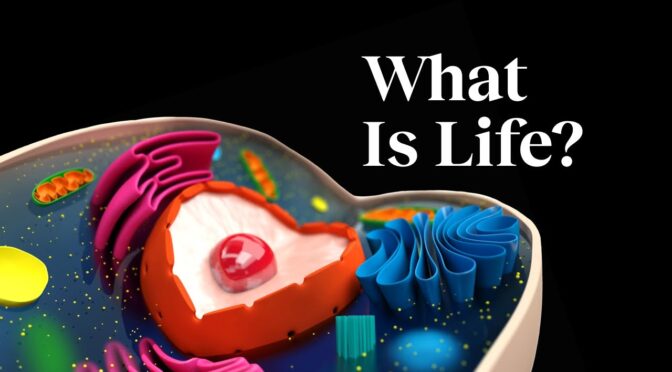This article is based on a video titled “The 5 core principles of life | Nobel Prize-winner Paul Nurse” by Big Think. The video delves into the quintessential aspects of life, as articulated by Paul Nurse, a Nobel Prize-winning geneticist and cell biologist. Nurse outlines five core principles that serve as the foundation of life, offering a comprehensive understanding of what it means to be alive.
Contents
- The Cell as the Basic Unit of Life
- The Gene: The Unit of Inheritance
- Evolution by Natural Selection
- The Role of Chemistry in Life
- Information Management in Living Systems
- The Convergence of Principles
- The video
The Cell as the Basic Unit of Life
Paul Nurse emphasizes the cell as the cornerstone of life, describing it as the simplest entity that exhibits the characteristics of being alive (it’s fascinating to think that even the most complex organisms start as a single cell). He uses yeast as a model organism to demonstrate that the same gene controlling cell reproduction in yeast also controls it in humans. This discovery suggests that the mechanism governing cell reproduction is ancient, dating back to a common ancestor between yeast and humans, possibly over a billion years ago.
The Gene: The Unit of Inheritance
The concept of the gene as the unit of inheritance traces its roots back to Gregor Mendel’s experiments with pea plants. Nurse discusses how Mendel’s work laid the foundation for our understanding of genetics, revealing that traits are passed down through unitary particles, now known as genes. This concept has far-reaching implications for how we understand inheritance and diversity within species (and it’s intriguing to consider how this knowledge has evolved over time).
Evolution by Natural Selection
Nurse considers the idea of evolution by natural selection to be one of the most transformative ideas in biology. Originated by Charles Darwin, this theory posits that hereditary material with advantageous traits will eventually dominate a population. This mechanism allows for the development of increasingly well-adapted organisms without the need for a designer, thus revolutionizing our understanding of the natural world.
The Role of Chemistry in Life
Chemistry is not just a subject confined to textbooks; it’s an active participant in the processes of life. Nurse explains that thousands of chemical reactions occur simultaneously within a single cell, facilitated by the cell’s compartmentalized structure. This intricate network of reactions is responsible for everything from growth and reproduction to energy capture and utilization (imagine the complexity of these processes happening in every cell of every living organism).
Information Management in Living Systems
Life is not just a series of chemical reactions; it’s also an information management system. Nurse elaborates on how cells coordinate various functions through the transmission of information. For example, a gene that produces a particular substance will switch on or off based on the levels of that substance within the cell. This dynamic illustrates the cell’s ability to manage information, ensuring that all its functions are harmoniously integrated.
The Convergence of Principles
In the video, Nurse concludes by tying together these five core principles, stating that they collectively define what it means to be a living entity. He argues that life is a bounded physical entity with a hereditary system that allows for variability and evolution by natural selection. This framework provides a holistic understanding of life, from its basic cellular structure to its ability to evolve and adapt.

